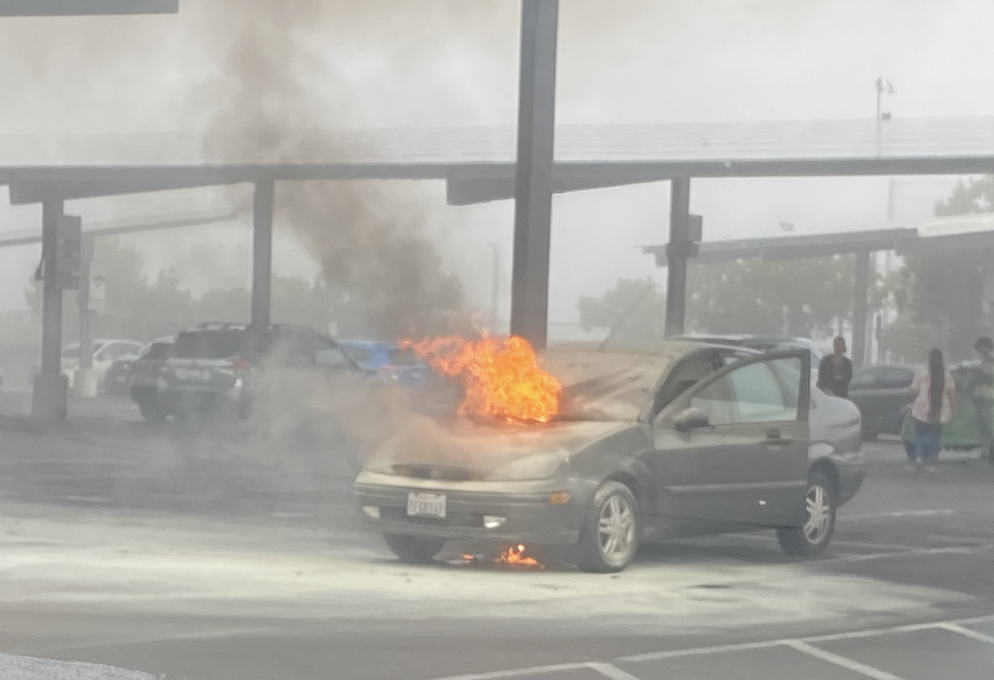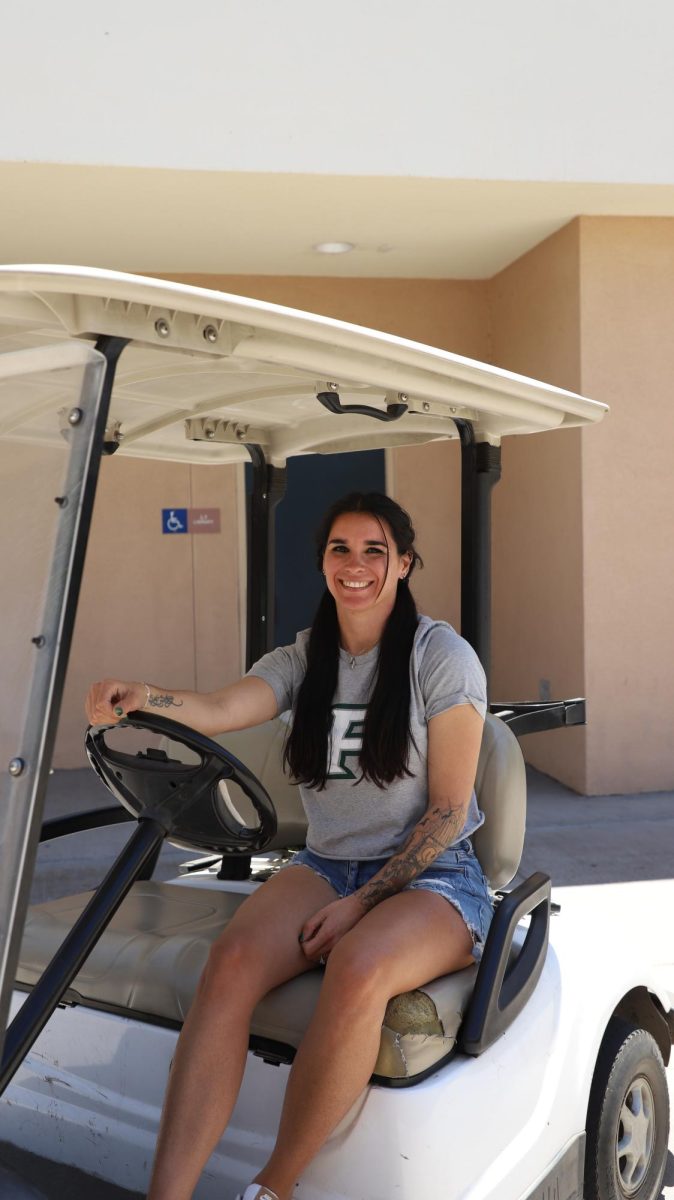On what should have been a typical Monday morning, the senior parking lot had been blocked off completely. The fog from the early morning parking lot should have been only water, but this time it was mostly smoke.
On Oct. 9., senior Corland “Landee” McIntosh was parked in the senior lot, waiting aimlessly for the starting bell to signal that it was time to exit the warmth of her car and scurry to first period. There are hazy clouds in the sky and the smell from the overcast weather around her almost disguises the scent of something else entirely.
At least until she notices the smoke from under her hood is not just the gloomy fog from the environment, and the people around her start to cautiously, panicked, tell her that there are flames set ablaze underneath her car. Within minutes her car started to get so hot, that the paint on the hood was bubbling and dripping away onto the pavement below. There was nothing McIntosh or any bystanders could do but alert campus security and wait for the fire department to arrive.
While car fires themselves aren’t common, they do happen every day. It’s estimated that around thirty car fires occur every hour in the United States. Fortunately, they are something that you can safely navigate should you follow some important steps.
“The first thing you should do is turn off and get out of your car. Move away from it at a forty-five or ninety-degree angle, stay about a hundred feet away, and call 911. Don’t go back for anything; cell phone, purse, anything!” San Diego Fire Department Fire Captain Dean McGowan said. Though not on-scene of the campus car fire, he has seen many accidents and unexpected car failures on the roads.
McGowan said to treat a car fire like any accident and stay away from your vehicle. You can replace material objects but you cannot reverse burn scars, severe injuries, or death.
“Car fires can be tough, but stay calm because if you’re flustered, you can’t do anything to help yourself. I was in an environment where I had people to stay with me, but if this were to happen to anyone anywhere else just remember to calm yourself down and do what you need to do to keep yourself safe and take care of what’s happening,” McIntosh said.
While fire extinguishers may seem like they’re meant for businesses and schools, keeping one in your car can prove to be crucial should you or someone you know find themselves in a bad position.
“A fire extinguisher would have been best in my case. A couple of students had them ready, but because the fire was under the hood, they didn’t do anything really,” McIntosh said. At some points, having a fire extinguisher may be helpful, but not if it means going back into a burning car.
Aside from fire, other dangers can include a flat tire, blown transmission, dead battery, or a car crash itself. Coming up with a safety bucket in your car can put you at an advantage. Objects like a Leatherman Multi-Tool, jumper cables, (and a spare tire) are recommended by Fire Captain McGowan. Other things to think about are roadside flares, window breakers, seatbelt cutters, a first aid kit, and flashlights.
Car safety does not stop at the amenities you keep with you at all times, it also means that you keep your vehicle in good condition and maintain its necessary safety features. “Always check your tread thickness, and don’t drive on bald tires,” automotive teacher Joseph Cousin said.
Driving on bald tires means that your tires do not have enough grip (tread) on the road — which makes spinning out in bad weather (or otherwise) likelier, and driving much more dangerous. Another thing he cautions is to always make sure that your windshield wipers are in good order and that your tires aren’t low, but also are not too high either. Tire PSI should never be filled to the max that is listed on the tire itself– instead, it should be filled a little lower than that, or your tire will blow out.
Cousin also mentions that things like fluid changes, new tires, and oil changes should not be put off. Many people ignore the check engine lights or faulty brake light warnings because of a lack of time to fix them or an assumption that the warning is an error. Oil changes especially should be punctual because without the oil to remove heat from the engine, it could cause complete engine failure; destroying your car entirely.
Car safety doesn’t stop at the car you drive and how often you service it, it also depends on you as the driver. Driving is an important part of day-to-day life, and being able to drive is a privilege that can be taken away if you abuse it. Not paying attention to traffic laws like speed limits and stop signs can result in the suspension of your driver’s license and even have some impacting legal consequences.
Speeding and reckless driving are obvious causes of crashes, but according to emergency responders, the most warned-off cause for teenage drivers crashing is- to no one’s surprise- cell phones.
“Distracted driving of any kind is the most common way that people find themselves getting into accidents,” Fire Captain McGowan said. Cell phones, however, predictably cause the most casualties on the roads. Driving with a cell phone in hand is a huge red flag, and can result in not only an overnight stay in the emergency room but a minimum of a $162 fine.
Fire Captain McGowan also cautions to watch your speed, pay attention to weather conditions, and put your cell phone in the glovebox or center console– out of reach.
There are a lot of ways to keep yourself safe while on and off the roads, but the most important thing to remember is to stay alert. Wait a few seconds before going at a green light and watch for people who may try to run it. Remember to keep yourself and your passengers safe and always wear a seatbelt, it can mean the difference between life and death.






